In May 2019, the solar industry was faced with a disaster unlike anything ever seen before, when a massive hailstorm passed through West Texas. In the path of the storm sat 174 Power Global’s 178 MW Midway Solar Project, bolted to the ground and pointed to the sky on 1,500 acres near Midland.
Once the storm had passed, the industry learned that it had left behind the largest weather-related single-project loss in its history. More than 400,000 of the plant’s 685,000 Hanwha Q cell modules were damaged or destroyed; insurance losses totaled $70 million, and most everyone involved endured at least a few sleepless nights.
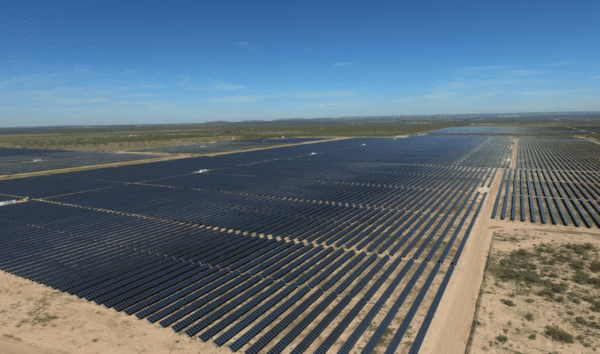
Image: 174 Power Global
The event served as a wake-up call to the industry. It completely reshaped how weather risks are modeled, how project owners and operators mitigate against potential damages, and how underwriters insure projects against natural disasters.
How was it that the solar industry didn’t see this coming? The answer may be simpler than you might think. Although hailstorms are not new to the wide open spaces of West Texas, solar projects are, especially solar fields on a massive scale like Midway Solar.
It’s more common for solar projects to suffer catastrophic damage from wildfires. After all, much of the early solar market was focused in California, a state with a high annual wildfire risk. Once development began to expand to the Southeast, hurricanes, high wind events, and flooding became of more concern.
In short, the rapidly growing industry wasn’t properly prepared for catastrophic hail because it had never before dealt with it.

Predicting the storm
Now that hail is a known danger, one step to mitigating it as a threat is to know now only where these storms happen but how often. The hail modeling sector has grown rapidly in the two years since Midway. And to better understand the evolution, pv magazine sat down with Peter Bostock and John Sedgwick of VDE Americas. The company provides technical due diligence and engineering services for solar power and energy storage systems.
The two said that historic hail threat prediction models were both general and minimal in nature, with developers relying on basic heat maps to locate what areas had severe hail potential. The two quickly realized that this approach would not be nearly enough, and that modeling needed to be done on a granular, site-specific basis.
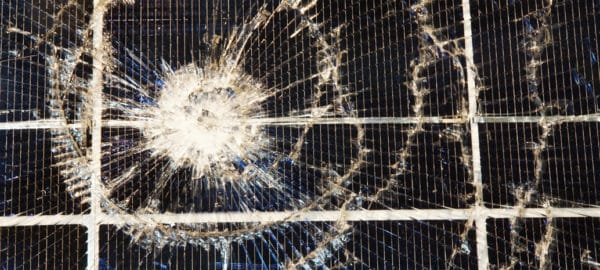
Image: istockphotos
“Even at a given location, there’s a size distribution,” said Bostock. “And if you map larger locations, there’s a broader spread to that location.”
To better understand what a future hail event could look like in a specific area, VDE has developed a tool that blends data from human storm spotters as well as from doppler radar.
Spotter data is useful because it can provide tangible context as to the size of the hail as well as its concentration and distribution. Spotter data are typically limited to high-population areas and common travel routes. Neither case applied to the Midway solar project in the expanses of West Texas.
Doppler radar also is used as it scans and tracks weather data constantly, typically at an 11 degree angle towards the sky. This means that the scanning elevation is higher as distance increases from the radar center. This is better for tracking hail, which forms high in thunderstorms. The radar scans storm conditions and can offer rough predictions of hail size, but even these predictions are not always accurate.
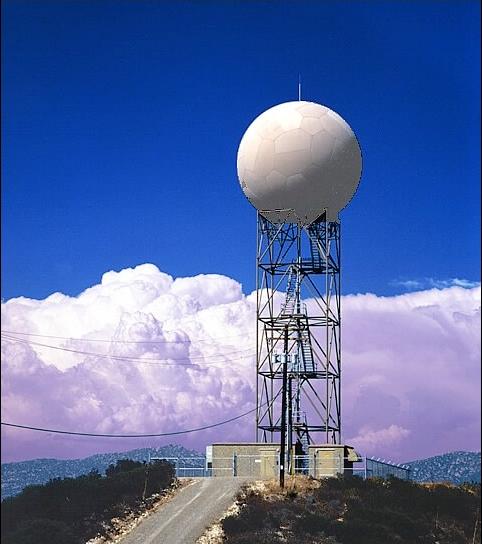
Image: NOAA.gov
But by overlaying spotter data with radar feedback data and finding correlations between the two, Bostock said that the radar data an be corrected for the likely size and concentration of the hail in real-time, providing a more accurate risk evaluation.
VDE used this approach to develop a tool that can predict the return interval, the likelihood of a certain type of hail occurring, and the expected size of hail across different locations.
As a result, Sedgwick came to the conclusion that preventing another Midway may be easier than first thought.
“When we initially started looking at it,” he said, “we certainly said ‘Oh my God, this situation is horrible.'”
VDE started by looking at how insurance companies addressed the problem from a top-down basis. That meant insurers looked at their actual losses and then used that dollar amount to calculate insurance rates, Sedgwick said. Instead, VDE elected to look at the issue from a different angle, using physics, trigonometry, and impact energy.
Sedgwick and Bostock said that by applying appropriate mitigation elements, operational elements, and equipment installed with appropriate stow management, the effects of hail can be significantly mitigated.
“What that tells me is that the issue is not as horrible as when we first started looking at it,” Sedgwick said.
Insurance evolving
Some 70% of solar insurance losses in the last 10 years have occurred since 2017, according to a report released by insurer GCube in early March. That reality that has caused the insurance market to harden significantly over the past 18 months, with premiums increasing by as much as 400%.
GCube asserted that the insurance sector hardening is a sign that the market is in a stronger position to provide coverage for the long haul for the solar energy sector.

Image: Pixabay
For example, some insurers have begun to offer specific hail insurance programs, called parametric insurance. These programs trigger coverage when a measurable hailstorm event occurs that exceeds a predefined threshold. The trigger for coverage and payout is determined by the size of the largest hail that falls on the solar project site.
These policies are defined by their fast payout times, a factor that has long been a hindrance of natural disaster insurance for solar projects. The new policy designs mean that payments can occur anywhere from a week and 10 days after a storm, and without a traditional on-site claims adjustments.
In a blog post for insurance broker Marsh, Michael Kolodner, U.S. power and renewables industry practice leader, outlined three criteria for insurers and PV developers to consider when trying to minimize hail risk.

First is modeling, as Kolodner stressed the importance of understanding each location’s relative exposures as well as the need to assess the frequency and severity of hailstorms to generate credible loss scenarios.
Second, he outlined the value of understanding what hardware should be used in hail-prone regions, specifically the value of trackers. While more expensive upfront, he said that trackers can mitigate a significant amount of hail damage, leading to overall lower losses in an extreme event and a lower long-term levelized cost of energy.
Third, Kolonder said that the market is quickly changing and and with it the need for stakeholder communication.
Surviving the storm
While modules have been the focus of PV hail damage and take the brunt of collisions with the icy projectiles, mitigating damage to a system does not start with the module, but with the tracker.
For industry NEXTracker, this mitigation comes in the form of NX Navigator, a software and smart control system that includes a hail function. This function moves the entire solar array to a safer, 60-degree stow angle.

Kent Whitfield, VP of quality at NEXTracker has found that there is a generally negative correlation between hail size and wind speed, which may seem counterintuitive when thinking about a big storm. However, in severe hail storms with particularly large ice balls, those balls fall more vertically. By stowing the solar panel, it becomes easier to stop the hail from striking the module face straight on.
When it comes to smaller hail balls in higher wind events, the industry is better prepared, due to its experience with hurricanes. That means solar systems and their trackers, have been designed to mitigate damage due to gale-force winds. As a result, they are, already well suited to handle the winds that can accompany small-ball hail storms.
As might be expected, the issue for modules has always been with repeated, large impacts. For individual impacts, many module faces can withstand a single stroke from an ice ball upwards of 40 millimeters (mm) in diameter, or around the size of golf ball, according to Whitfield, as well as up to 11 strikes of 25 mm hail. By stowing modules, not only is the risk of module face-strikes reduced, but the system is not further compromised by the increased wind speed.
The shortcomings of testing
On the hardware side of things, solar modules are designed to meet IEC 61215 and IEC 61646 standards, both of which test a module’s resistance to lab-produced, 25 mm hail. While this may show that the module can survive a pelting with up to 11 individual strikes, Bostock and Sedgwick said that the return interval for such a storm is once every year or two in West Texas.
What’s more, storms in Texas can generate hail much larger than the 25mm testing standard. That brings modules into a realm beyond their tested parameters.
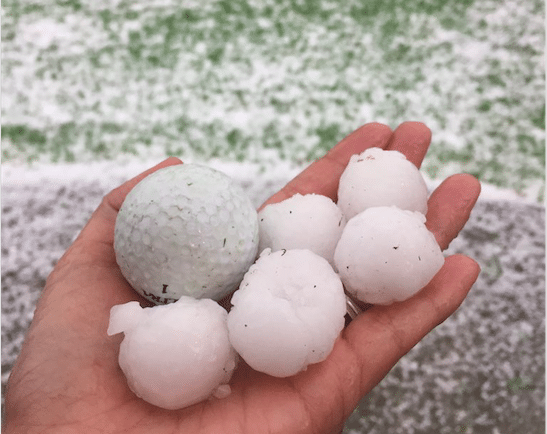
Image: AccuWeather
Bostock and Sedgwick also have found that natural hail forms differently than hail generated in a lab. Natural hail generally forms as oblate spheroids, with some variety in shape from ball to ball. More uniform spherical balls are routinely used in laboratory test settings. Natural hail also typically has a lower density (especially when it comes to large hail) than lab-made ice balls of the same diameter. This results in lower energy upon impact than lab-made hail of same diameter.
The difference between natural and lab-made hail is not necessarily a bad thing. If the hail used for testing proves to be more destructive on impact and the module still survives, then developers may have greater confidence when it comes to using the product in the field.
It’s all about finding the right size and conditions for testing extreme hail impacts. “There’s a need for module manufacturers to assess what happens in real life when hail meets module and to do that in a much more thorough way than to just simply pass the necessary IEC tests,” said Bostock.
The reason that lab tests required for PV modules do not reflect the reality of hail in the Texas and other states is simple: the tests weren’t developed with those areas in mind.
In an interview with pv magazine, NEXTracker’s Kent Whitfield said that the tests were designed when PV largely was economically viable only in California. As far back as 1977, NASA’s Jet Propulsion Lab recommended that developers looking to bring PV projects to the Great Plains states should prepare for hail up to 38mm in diameter or larger–50% or more larger than today’s testing standards–occurring every six to eight years.
“Accepting the way that PV modules are tested today for hail might not be the right thing to do going forward,” said Whitfield. “What we as an industry need to consider is some sort of a differentiation.”
Whitfield said he expects the industry to take an “all-in” approach, in which it takes a collective look at existing testing standards and modify the severity thresholds in a way that does not penalize all modules.
The long-term
One last aspect that current testing doesn’t adequately account for is the non-visible damage that modules can suffer during a hail storm. A row of modules may appear unaffected for days or even weeks after the event, but the storm could have caused damage and microcracks at the cell level. Such damage wouldn’t initially be visible, but result in a host of performance issues.
In the end, cell-level damage mitigation comes down to monitoring in the weeks or months after a storm. And keep in mind that the mere presence of a microcrack doesn’t necessarily mean anything; it’s how that crack respond to natural heat fluxes and movements during operation that may manifest into a potentially harmful problem.
Market specialization
To Whitfield, the continued expansion of solar energy arrays into extreme hail-prone regions opens possibilities for the module industry. For example, module manufacturers could produce hail-resistant modules specifically for hail-prone areas. Those panels could undergo even more rigorous testing, qualifying them for a special tag or specification that that the panels are suited for hail-prone regions.
As solar projects continue to be deployed in hail-prone regions of the U.S., then manufacturers may adjust their manufacturing processes to produce more resilient, that can survive a storm and then get back to the business of generating clean energy from the sun.
In the second installment of this series, pv magazine talks with Michael Kolodner of Marsh to learn about the evolution of hail risk management and how insuring a solar project is about more than just the policy. Read Part 2 here.
This content is protected by copyright and may not be reused. If you want to cooperate with us and would like to reuse some of our content, please contact: editors@pv-magazine.com.
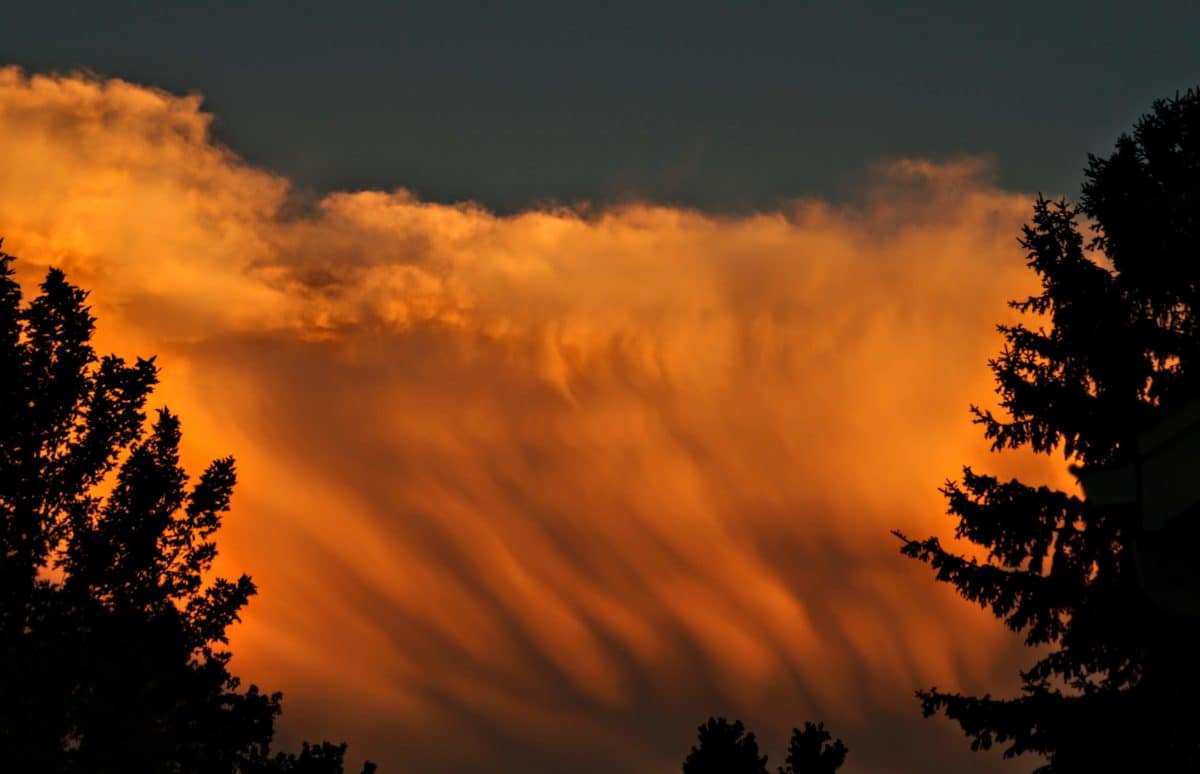








By submitting this form you agree to pv magazine using your data for the purposes of publishing your comment.
Your personal data will only be disclosed or otherwise transmitted to third parties for the purposes of spam filtering or if this is necessary for technical maintenance of the website. Any other transfer to third parties will not take place unless this is justified on the basis of applicable data protection regulations or if pv magazine is legally obliged to do so.
You may revoke this consent at any time with effect for the future, in which case your personal data will be deleted immediately. Otherwise, your data will be deleted if pv magazine has processed your request or the purpose of data storage is fulfilled.
Further information on data privacy can be found in our Data Protection Policy.